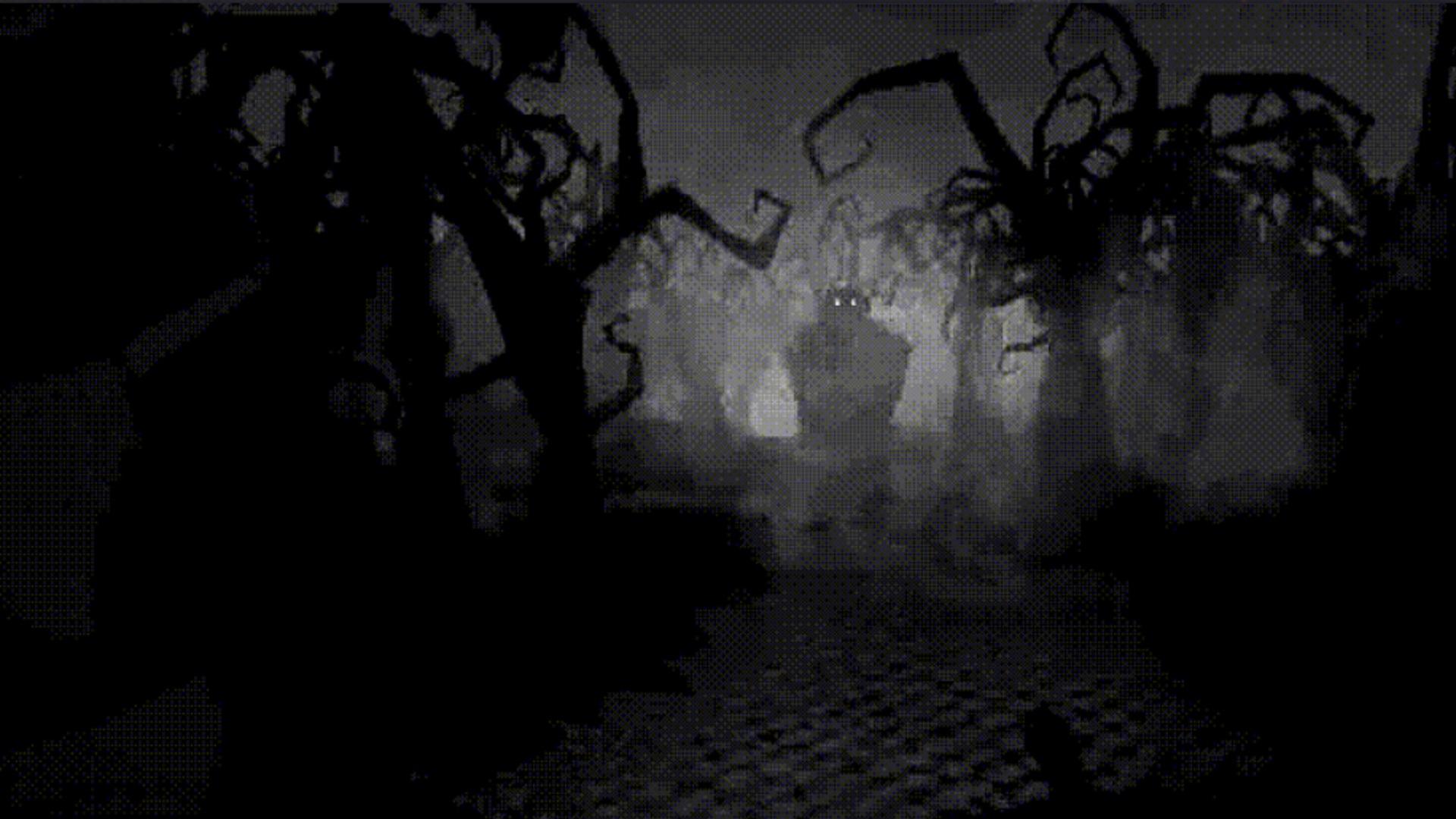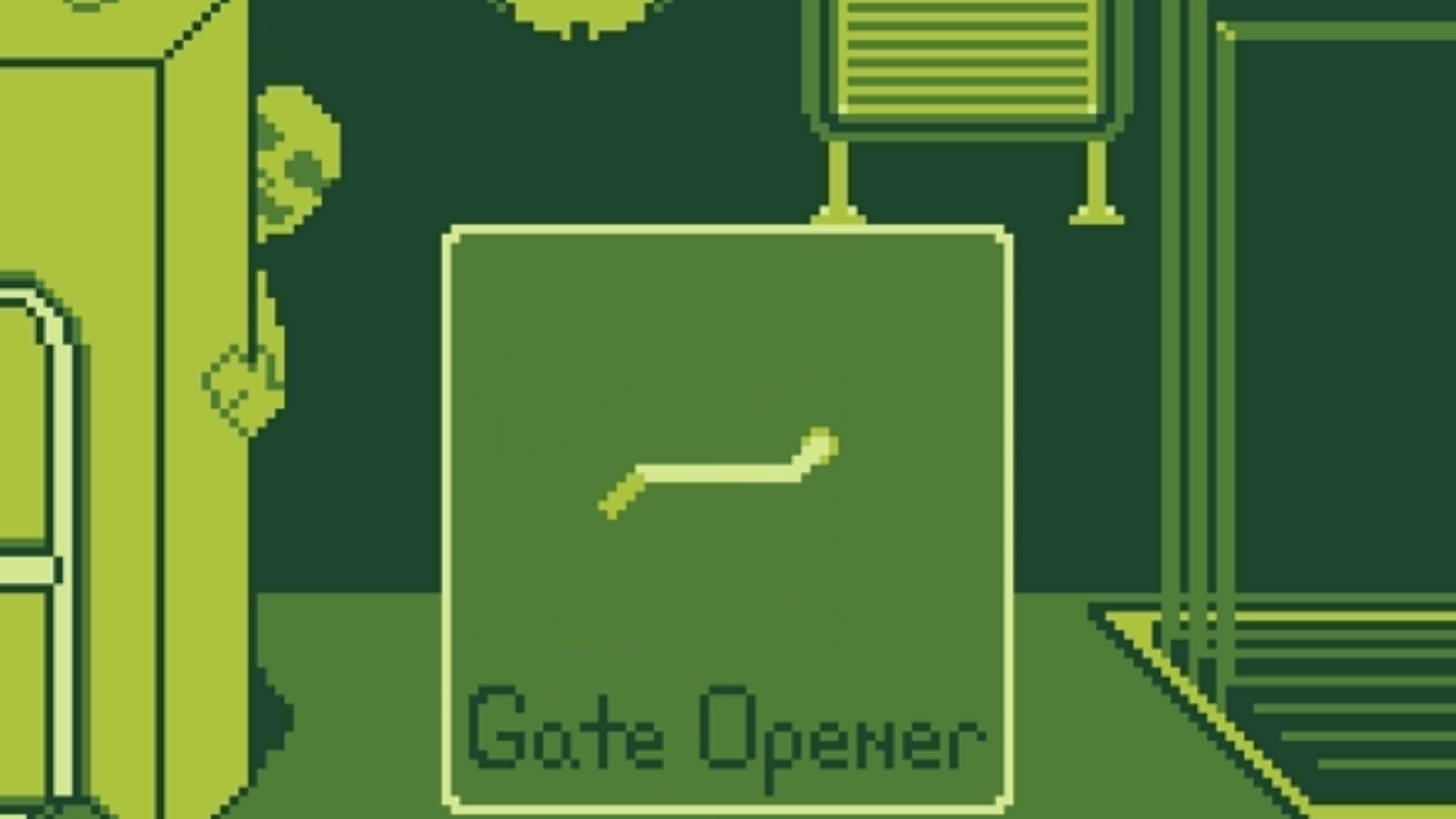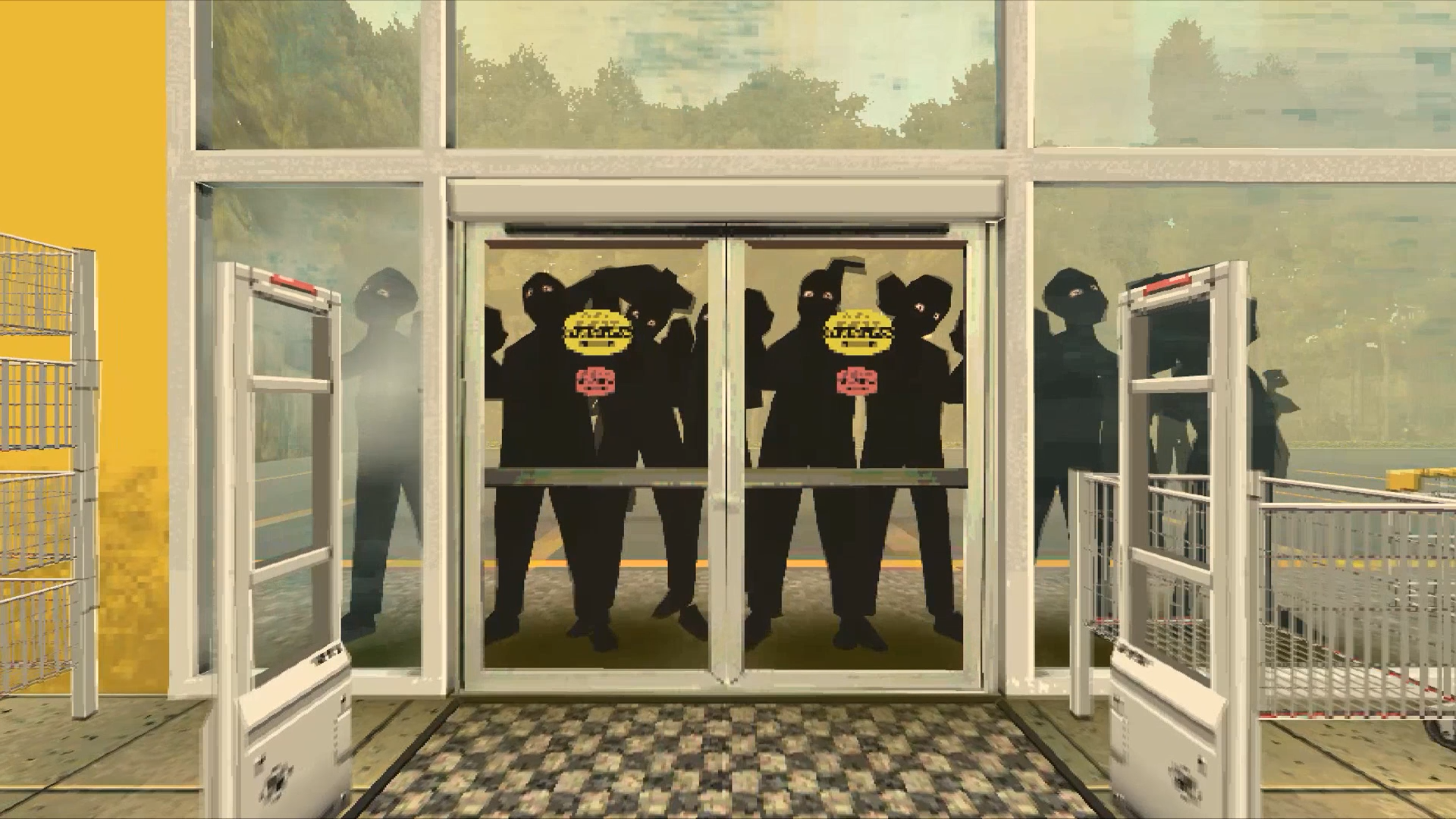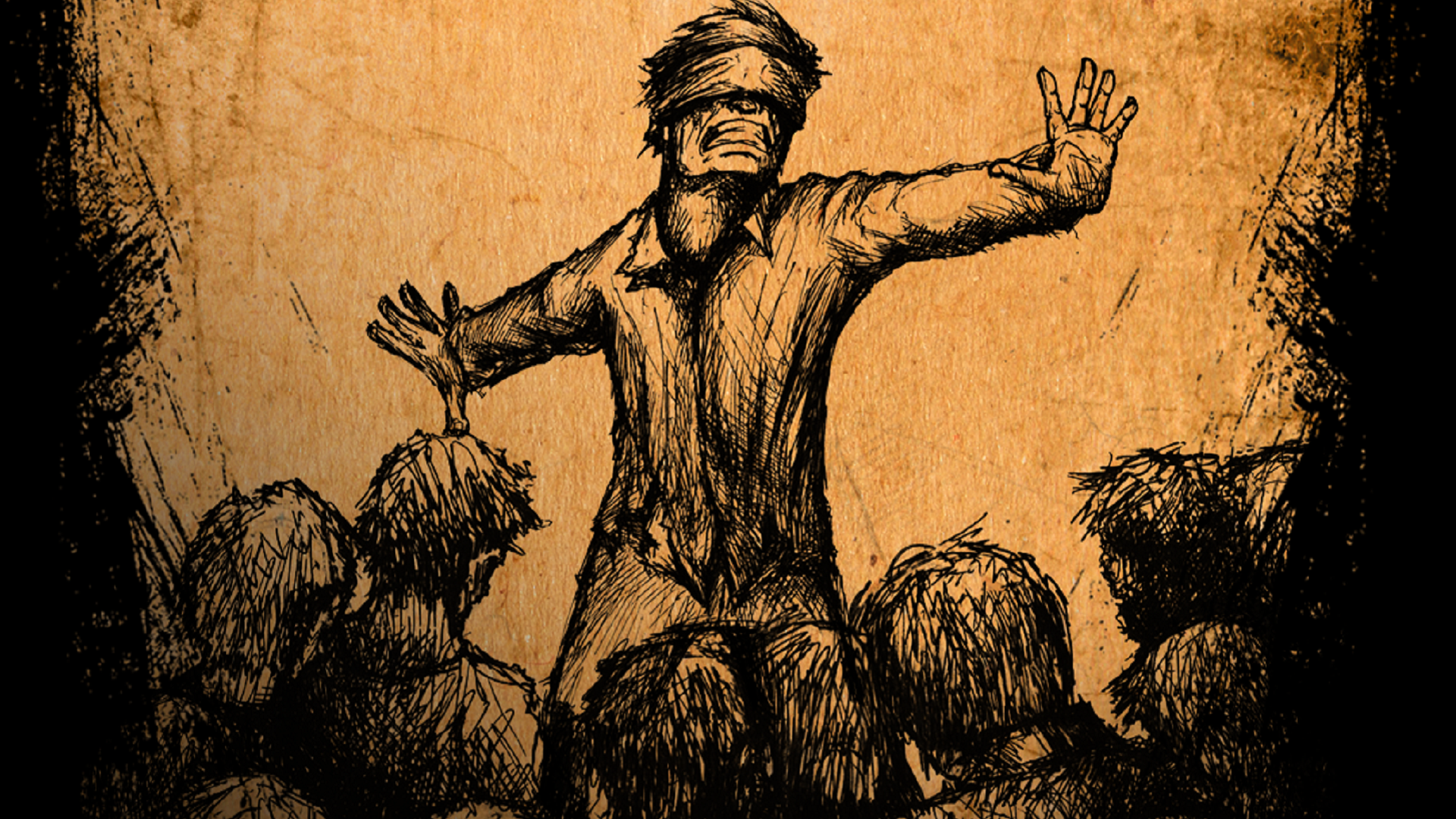
Night Feed & The Frightful Inspirations of Black & White Horror
Night Feed draws from the strange, twisted locales and creatures of the horror greats of German Expressionist film and silent black & white horror. Using this imagery, it takes the player to a world of bent, winding places. The developers, Atreyo Alves Geraldi and Davide Puato of Anathema Dreams, use this surreal place to set the player on edge. Then, they stalk them with a monster that’s all too familiar from that era of film: the Nosferatu.
What was it that interested the developers in using this imagery from films like Nosferatu and The Cabinet of Dr. Caligari? “We went for a grimy black and white look inspired by old silent movies. The 3D models of the game are all twisted and pointy, so everything looks strange and possibly dangerous. Nosferatu has an angular design and is covered in black. This aesthetic helped us hide him in the scenery. The PSX filter also helped with hiding him in the scenery when far away, since it mixes the pixels together in the distance,” said the developers.
This visual style, despite its age, allowed the developers to create some special scares within Night Feed, enhancing the fear they wanted to create within it.

The Setup
The game, which came out of the Haunted PS1 Summer of Screams Jam, has the player being stalked by a dangerous Nosferatu. This visual style created a naturally-creepy atmosphere for this hunt. So, it only made sense to get to work on the player as soon as the game started.
“There are two scares that we think were very important for Night Feed, but the first one – the one in the forest – is probably the most crucial to the game. In it, the player goes through a small forest in which Nosferatu is secretly stalking them. At the end of the forest, the player finds a key. At that moment, Nosferatu comes out of the shadows and chases the player,” said the developers.
It’s those moments where he stalks the players, his twisted body shifting among the trees, that were important to this setup. “We wanted to ‘sell’ the idea that a predator is stalking the player. So, before the scare and chase, we wanted the player to feel that there was something observing him – that something is coming closer with every meter of progress through the forest. To accomplish this feeling, there are 3 different key moments through the forest.”
“The first one is Nosferatu observing the player through the trees. We wanted it to be something subtle and almost subliminal, to the point where the player can miss it. This is because, if the player is able to find the hidden observing eyes by themselves, the discovery can give a tense thought of ‘Was it always there?’ and ‘What is that?’ Therefore, it gives the player a sensation of uneasiness for the subsequent walk through the forest.”

This uncertainty played well with the visual style of Night Feed, as it builds a kind of unease in reality. The world itself is askew in movies like Nosferatu and The Cabinet of Dr Caligari. Looking at them makes you feel that something is wrong there, even if you can’t pinpoint an objective reason. So, being unsure if you saw something staring at you through the trees connects with that fear and uncertainty. You already feel like something is wrong that you can’t see. So, adding the uncertainty of whether you saw something out there only heightens this tension.
This plays well with the next moment, where the developers heighten tension with the audio. “The second moment is the distant Nosferatu’s laugh being obscured by the old film static sound effect that plays constantly through the game. We tried making it so that it seemed that the static itself was laughing at you. We added this moment in case the first scare was missed. The strange, obscured laugh makes it obvious that there is something in there with you. If the player did find the observing eyes before, it confirmed the suspicion of not being alone.”
“For the third one, we made Nosferatu himself run across the trees on the player’s path. He goes by very fast so that the player can’t get a full look at what it is. This moment, combined with the others, is made to give the idea that he is coming closer and closer to you. First he spots you, then he laughs as he finds his prey, then he physically comes close as a final warning,” the developers continued.
These three moments create an unease in the player – a similar sensation to what this bizarre, bent reality makes them feel. Night Feed creates that initial sense of the world being out of sorts, then adds to it with these uncertain, monstrous appearances. The final scare happens quickly, serving to show you that your fears, which maybe you’ve been doubting, are real. Like the monster movies they’re inspired by, eventually, you see that reality is just as frightening as the twisted environments would have you believe.

The Scare
“These moments lead up to Nosferatu finally coming out of the trees and sprinting towards you after finding the key. They build to form the overall idea that he stalks you until the moment to strike is right. It’s like a predator does with its prey.”
The player, firmly on edge, now needs to grab a key from a pedestal. A simple act, but if you’ve played enough horror games, you likely know that it means trouble. Knowing a scare is probably coming only preps you so much, though. Especially with what the developers have in store.
“For the scare, it’s more tense because Nosferatu comes from the trees that are in front of the key. When the player gets the key, they are indirectly looking at Nosferatu. They are, staring at him when he suddenly appears and quickly approaches. This gives a second of panic, and now the player has to think and run away while scared”
Nosferatu rushes you. You’re looking at this key, and he comes surging toward you from behind it. This creates a jarring, mind-tangling scare that is the height of fear in Night Feed. The game builds the player up with all of this scary possibility, then get slams them with the reality they were afraid of all along. Something IS following them. They did hear something. That thing you saw wasn’t your imagination. It takes that unsettling Expressionist nightmare realm and makes it real with a single aggressive scare.

Aftermath
From this point on, you’re on a terrifying run through an open-world forest filled with strange, unsettling trees under a foreboding, unreal sky. It’s in that lead-up where the developers play with that sense of the unreal that comes from German Expressionist film and the giants of silent black & white film. It’s in using the visuals and sound to make the player feel that they have moved to a place outside reality – a world painted by the creator’s imagination.
In drawing from horror films in this movement, Geraldi and Puato create a realm of nightmares that exists beyond the real, using the world itself to hint at danger through its twisted shape. Then, increase fear with frightening moments that leave the player doubting if they really saw or heard anything. As they peel that uncertainty back, they reveal a world that is just as frightening as the player imagines. Maybe even moreso, which we feel when the Nosferatu comes rushing toward them.
The horror greats of the Expressionist era still carry a power to transport the viewer to a place of nightmares. Games like Night Feed remind us of the rich, frightening power that still exists in this style. When used right, this style continues to terrify players over a hundred years after the style was first created.




